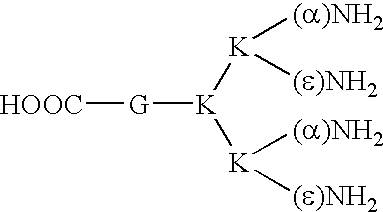Inhibitors of placental growth factor for the treatment of pathological angiogenesis, pathological arteriogenesis, inflammation, tumor formation and/or vascular leakage
a growth factor and inhibitory technology, applied in the field of placental growth factor inhibitors for the treatment of pathological angiogenesis, pathological arteriogenesis, inflammation, tumor formation and/or vascular leakage, to achieve the effect of enhancing angiogenesis, vascular permeability and arteriogenesis
- Summary
- Abstract
- Description
- Claims
- Application Information
AI Technical Summary
Benefits of technology
Problems solved by technology
Method used
Image
Examples
Embodiment Construction
[0038] 1. Impaired pathological angiogenesis in PIGF.sup.- / - mice
[0039] In several pathological conditions, in particular when associated with increased VEGF expression, formation of new endothelial-lined channels (angiogenesis) was significantly impaired in PIGF.sup.- mice. Growth and angiogenesis of embryonic stem (ES) cell-derived tumours, known to be mediated by VEGF (Ferrara N. et al, 1996, Nature 380, 439-442) was also dependent on PIGF. Indeed, PIGF.sup.+ / + ES cell-derived tumours, obtained within four weeks after subcutaneous inoculation in nu / nu PIGF.sup.+ / + mice, weighed 4.+-.1 g (n=8) and appeared haemorrhagic and bled profusely (7 of 8 tumours). In contrast, PIGF.sup.- / - tumours in nu / nu PIGF.sup.- / - hosts only weighed 1.0.+-.0.3 g (n=8) and were homogeneously white with minimal bleeding (5 of 7 tumours). Growth and vascularization in PIGF.sup.- / - tumours were reduced to the same degree as in VEGF.sup.- / - tumours. PIGF.sup.+ / + and PIGF.sup.- / - tumours contained comparabl...
PUM
| Property | Measurement | Unit |
|---|---|---|
| Mass | aaaaa | aaaaa |
| Nanoscale particle size | aaaaa | aaaaa |
| Nanoscale particle size | aaaaa | aaaaa |
Abstract
Description
Claims
Application Information
 Login to View More
Login to View More - R&D
- Intellectual Property
- Life Sciences
- Materials
- Tech Scout
- Unparalleled Data Quality
- Higher Quality Content
- 60% Fewer Hallucinations
Browse by: Latest US Patents, China's latest patents, Technical Efficacy Thesaurus, Application Domain, Technology Topic, Popular Technical Reports.
© 2025 PatSnap. All rights reserved.Legal|Privacy policy|Modern Slavery Act Transparency Statement|Sitemap|About US| Contact US: help@patsnap.com


